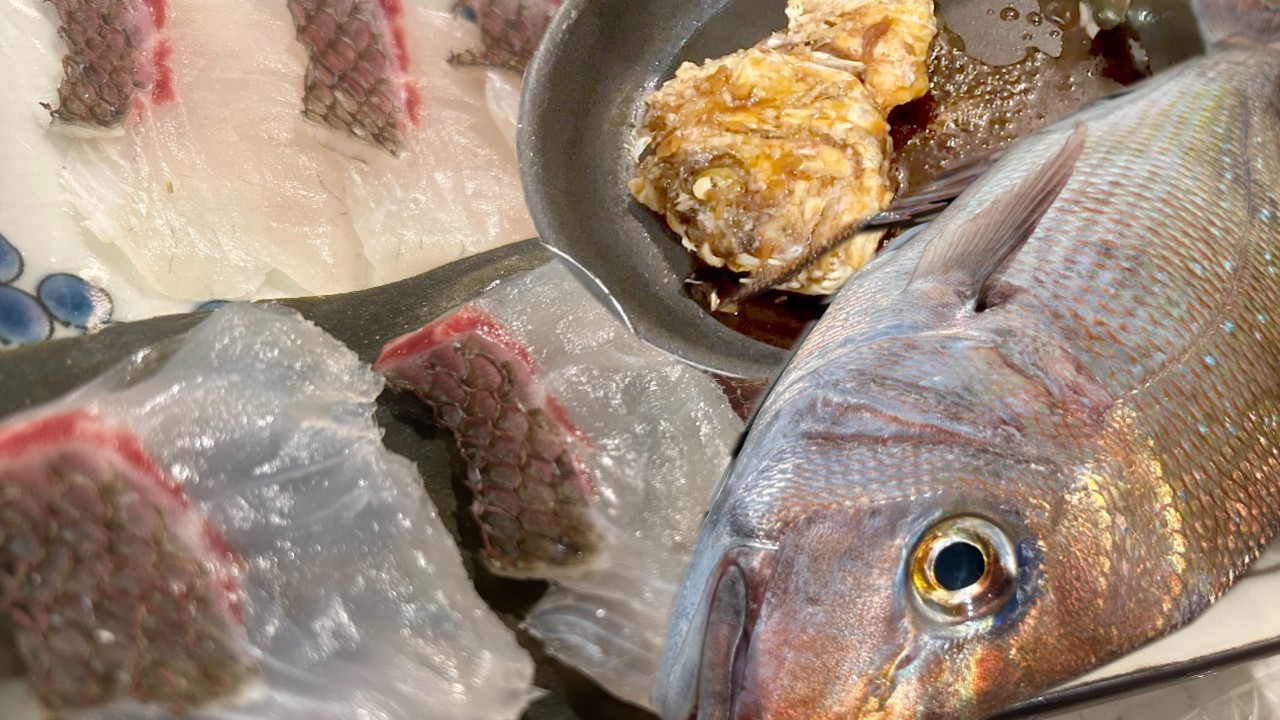Fishing the Seaweed Farms of Awaji
Hey, welcome back to another episode of Fishing Life Awaji! I’m Daiki. It’s early April, and with the weather getting warmer, it’s a much more comfortable time to be out on the water. Today, I’m at a unique fishing spot right next to Awaji Island, an area completely surrounded by seaweed farms.
From October to May, local fishermen set up these nets 360 degrees around the island to cultivate
nori (seaweed). By March, the seaweed has grown large, and broken pieces float off the nets, creating a natural feeding ground. A lot of fish gather here to feast on this abundant food source, and that’s what I’m here to target. It’s a bit windy today, so it will be a short trip—maybe only an hour or two—but I’m hopeful I can get something good.
The Hunt for Red Snapper
My primary target is Red Snapper. I start by searching for schools of fish with my fishfinder and quickly locate a massive school occupying the entire middle range of the water column.
To match what the fish are eating, I’m using my original, handmade sabiki rig. This rig is over 10 meters long, allowing it to cover a wide range of depths at once. I’ve customized it with small black pieces to imitate the broken seaweed the fish are feeding on.
The technique for this type of fishing is incredibly simple:
- Drop the rig to the bottom.
- Reel it in very slowly at a steady, consistent pace.
- When you feel a nibble, don’t set the hook. Just keep reeling at the same speed, and the fish will hook themselves.
Just as I had hoped, the tide turned, and the “rush hour” began. Soon, I was hooked up. I ended up landing a fantastic double-header: two decent-sized Red Snapper, both around 50 cm long! After just an hour of fishing, I had more than enough for a meal, so I decided to call it a day.
Before heading in, I perform ikejime on the fish—a Japanese technique to preserve the quality of the meat. This involves spiking the brain, bleeding the fish, and breaking the nerve, then cooling them down in ice water. This ensures the fish stays fresh longer and won’t have any fishy smell.
A Three-Course Red Snapper Feast
Back home, after scaling, gutting, and cleaning the fish, I set one of the snappers aside to make three delicious dishes.
1. Kelp-Cured Red Snapper Sashimi (Kobujime)
This traditional preparation uses kelp to infuse the fish with a deep umami flavor.
- Yubiki: I start with a technique called yubiki, pouring boiled water over the skin of the fillet. This softens the skin, making it enjoyable to eat with the sashimi.
- Layering: I slice the fish and layer the sashimi pieces between sheets of kelp that have been moistened with sake.
- Aging: The package is wrapped and rested in the fridge for about an hour. The result is incredible—the meat becomes firmer, and the flavor gets much sweeter than regular sashimi.
2. Fried Teriyaki Red Snapper Head
You never want to waste the head of a snapper; the meat quality is even better than the fillet.
- Frying: I split the fish head, season the pieces with salt, coat them in potato starch, and fry them until crispy.
- Teriyaki Sauce: While the fish is frying, I make a teriyaki sauce with grated ginger and garlic, soy sauce, mirin, sake, honey, and water. The sauce is heated for about 5 minutes until it thickens.
- Finishing: The fried head pieces are tossed in the warm teriyaki sauce. This dish is the perfect combination of juicy meat and crispy skin, with a wonderful sweet and savory glaze.
3. Simmered Red Snapper Head (Aradaki)
This is another classic dish for the fish head.
- Broth: A simmering liquid is made by boiling sake and mirin, then adding soy sauce, dashi, water, and honey.
- Simmering: The fish head, collar, and some root vegetables are simmered in the broth with ginger until tender and packed with flavor.
From a well-planned fishing trip to an elaborate home-cooked meal, it was a perfect day.

